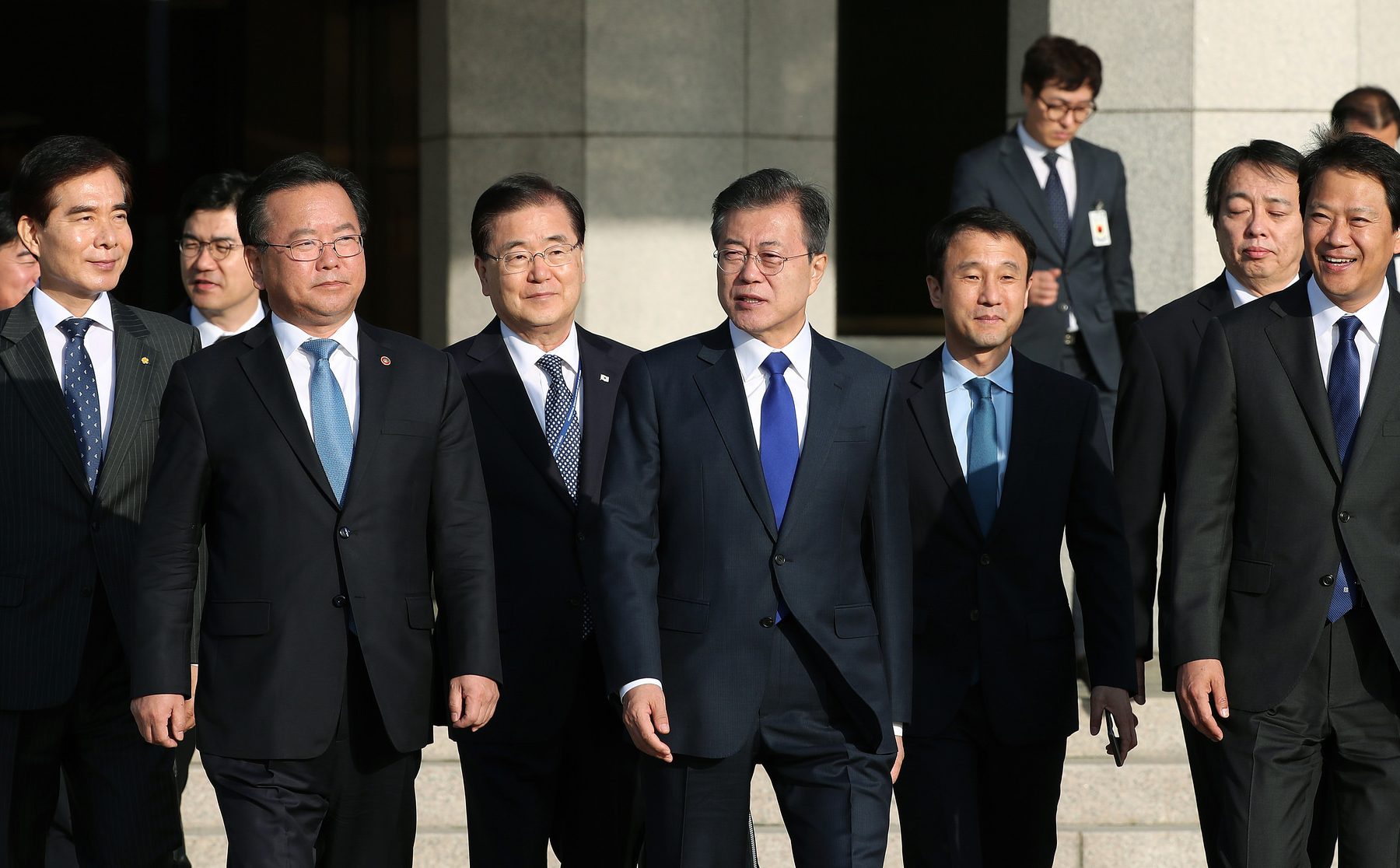“I heard you had your early-morning sleep disturbed many times because you had to attend the N.S.C. meetings because of us,” Mr. Kim said with a smile, “Getting up early in the morning must have become a habit for you. I will make sure that your morning sleep won’t be disturbed.”
“Now I can sleep in peace,” Mr. Moon replied.
In a series of candid statements, DPRK leader Kim Jong Un and Republic of Korea President Moon Jae-in joked about North Korea’s frequent early morning missile tests. This was one of many unscripted sound-bites that have left the world wondering what is next for the two Koreas.
The historic inter-Korean summit on Friday April 27 was a feat of peninsular reconciliation, but raises questions about why past negotiations failed, and how to avoid a similar fate in current discussions. Kim Jong Un is the first North Korean leader to travel across the Demilitarized Zone (DMZ) to the South since the partition of the peninsula at the conclusion of the Korean War in 1953.
Friday’s meeting was brimming with political symbolism and theater. President Moon Jae-in sported a tie that matched the color of the unification flag the two nations adopted at the Winter Olympics just a few months ago. Meeting first on the Southern side of the DMZ, the two Korean leaders broke script and stepped over onto the northern side to convey unity before proceeding to Panmunjom, the truce village.
“A new history starts now. An age of peace, from the starting point of history,” Kim wrote in the guest book in the South’s Peace House prior to talks.
The leaders sent another strong message of Korean harmony as they embraced in front of a painting of Mount Kumgang, a prominent North Korean landmark. In a nod to former peninsular unity, the two leaders walked in a procession among nineteenth-century imperial garb-clad men. The meeting came to a symbolic head when the two leaders replanted a tree with soil and water from both sides of the border. The tree was originally planted at the conclusion of the Korean War.
Although the choreography at the summit was expected, several of Kim’s talking points in his private meetings with President Moon were not; Kim challenged expectations with candor as he referenced the DPRK shelling of Yeonpyeong island in 2010, missile launches (see above), divided families, and poor infrastructure in the DPRK.
The summit produced an essential framework for upcoming negotiations. The Joint Declaration highlights issues of reconciliation, defusing military tension, and establishing permanent peace on the peninsula. Among the most important provisions of the document are the establishment of a joint liaison office in Kaesong, a promise to transform the DMZ into a peace zone free of derisive propaganda, a joint goal of “complete denuclearisation,” and lastly the promise of trilateral and quadrilateral meetings with China and the U.S.
Although many see the declaration’s merit in framing geopolitical and peninsular conversation, skeptics see it as a vague and hollow document. Notably absent from the Joint Declaration was mention of tangible human rights efforts, economic cooperation activities (except a reference to rail and road projects), and a specific benchmark for “complete denuclearization.”
Ralph Cossa, President of the Pacific Forum, outlined several salient metrics for gauging North Korean sincerity. He hopes that the DPRK will agree to freeze missile and nuclear testing, not just halt it, in addition to recognizing South Korea as a sovereign equal.
Kim arrived to the summit on the South Korean side of the DMZ in a heavily armored car surrounded by jogging, suit-clad security guards, a nod to the harbored caution amidst bounding peninsular and international optimism. President Trump, Vice President Pence and British Foreign Minister Boris Johnson also expressed cautious optimism. Pence went so far as to add that negotiations with North Korea will be “met with reservation, vigilance, and verification.”
With expectations of peace soaring, the world waits with bated breath in anticipation of the Trump-Kim summit next month.
Inconsistency as a result of democratic transitions in South Korea and the United States poses the biggest threat to peace negotiations. As skeptics such as the American Enterprise Institute’s Nicholas Eberstadt have alluded to, past moments of great peace progress on the Korean peninsula have come and gone before.
As Eberstadt argues, similarly symbolic and optimistic talks in 2000 and 2007 have since been “trash-canned.” However, while skeptics often fault Kim and his unreliable state, it is worth analyzing the role of the U.S. and Republic of Korea in the breakdown of past negotiations.
As the Agreed Framework talks came to a head in 2000 under President Clinton, the election of President Bush signalled the end of “carrot” approaches in favor of “stick” techniques. Clinton’s liberal progress with the two Koreas came to an end as the Bush administration tore down the Framework and replaced it with hardline rhetoric and deterrence.
In 2007 inter-Korean relations warmed under South Korean President Kim Dae-jung’s Sunshine Policy. However, the democratic transition to Lee Myung-bak in 2008 once again stifled his predecessor’s liberal diplomatic progress on the peninsula.
As our very own Distinguished Lecturer Bradley Babson (Chair of the DPRK Economic Forum, USKI and former World Bank Executive) asked, “How do these agreements survive political changes in democratic transitions?” Before we point fingers at North Korea for past negotiation failures, we must appreciate the difficulty democratic administration change presents and ask how a permanent peace agreement on the Korean peninsula can be reached in spite of this phenomenon.




